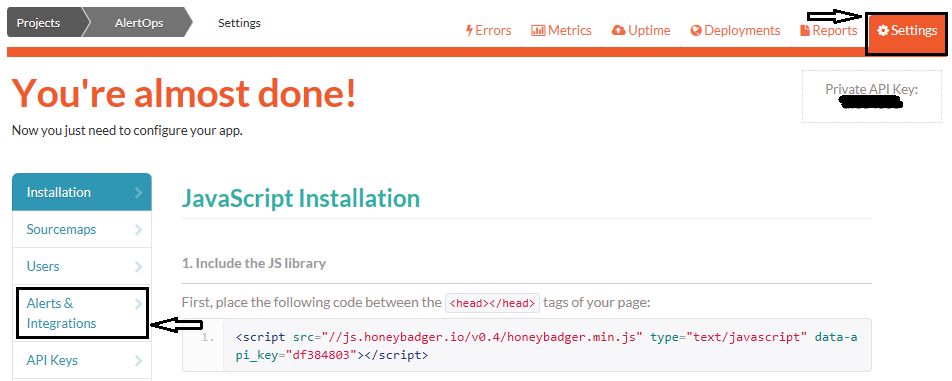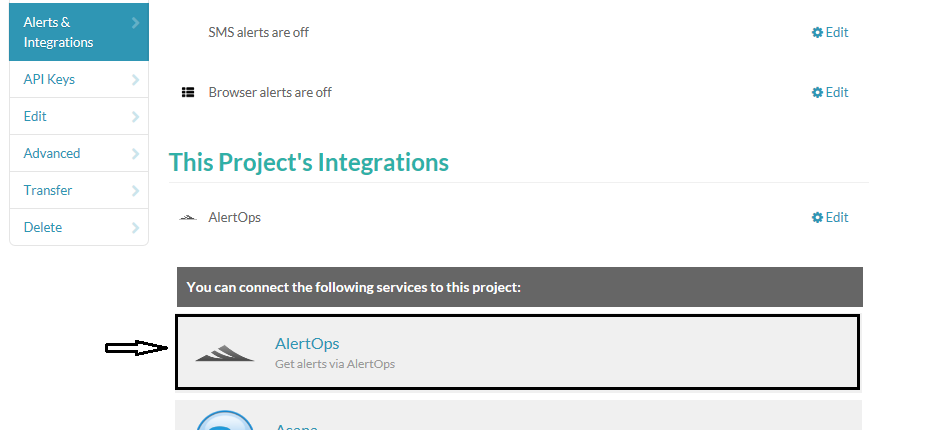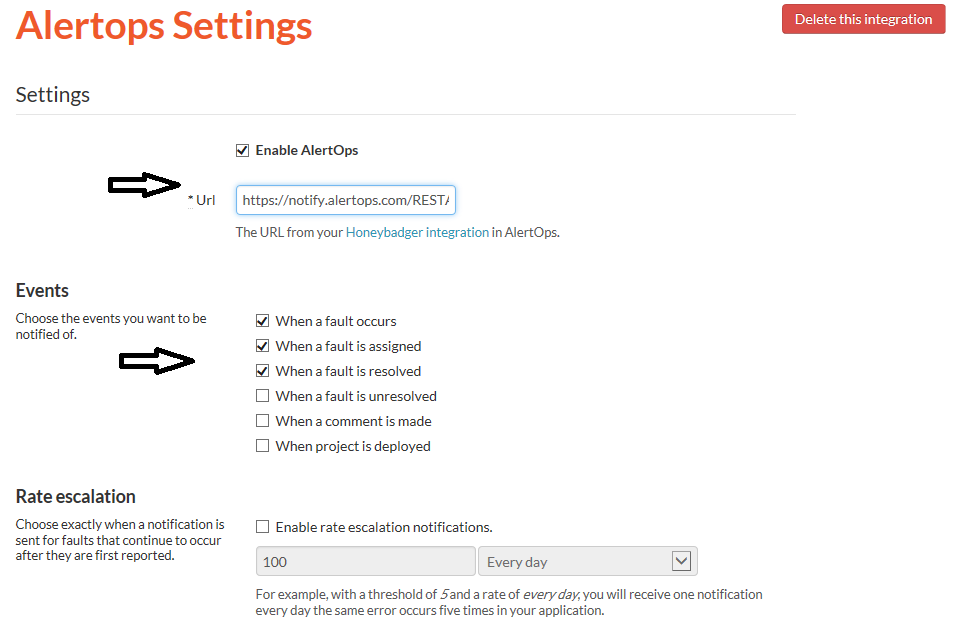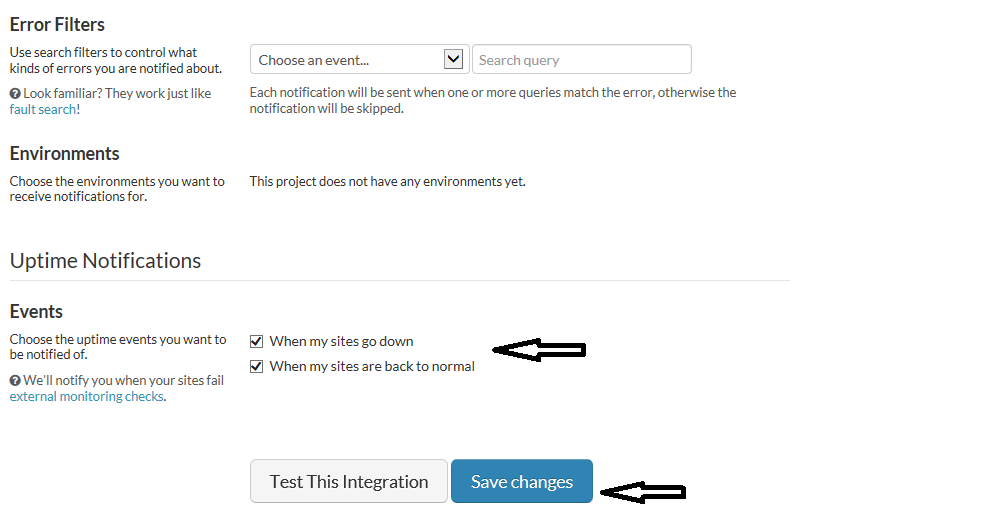- 03 May 2024
- 1 Minute to read
- Print
- DarkLight
- PDF
Honeybadger
- Updated on 03 May 2024
- 1 Minute to read
- Print
- DarkLight
- PDF
Honeybadger Integration Guide
Honeybadger monitors ruby apps in production to let you know when exceptions, downtime and performances issues happen. Integrate AlertOps’ alert management platform with Honeybadger to receive and respond to critical alerts through email, SMS, push notification, and phone alerts. AlertOps ensures that alerts received from Honeybadger always reach the correct, available team member by utilizing escalation policies and on-call schedules.
AlertOps Configuration
- From the main menu, click on Integrations and then select Inbound Integrations from the sub menu.
- Select API tab
- Select the 'ADD API INTEGRATION' button.
- You should now be on the API Integration Detail page. Select Honeybadger from the pre-built Integration Templates.
- Enter a name for the integration. Select an escalation rule to determine the integration's escalation policy. And enter the names of recipient group(s) and recipient user(s). Click 'SAVE.' Then, click 'COPY URL' to copy the URL endpoint to be used in the Honeybadger configuration.

Honeybadger Configuration
Step 1: Go to Settings and then Click Alerts & Integrations as shown in the picture below

Step 2: Select AlertOps from available integrations.

Step 3: Set integration settings and be sure to click save. See below for a sample integration setup.


Alert Triggering Information
AlertOps will automatically create an incident when a new alert is received from Honeybadger with an IncidentStatus status of “false.”
If an alert with status “false” matches an existing Open Alert, AlertOps will recognize the new alert as a duplicate and ignore the alert. The alert will be recorded in the Inbound Messages table as “Mapped Appended.”
AlertOps will automatically close the same incident when an alert with an IncidentStatus status “true” is received.
Testing and Troubleshooting
Click here to read about Web API Testing and Troubleshooting.


